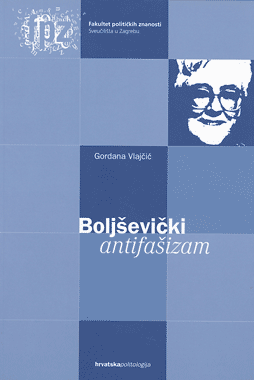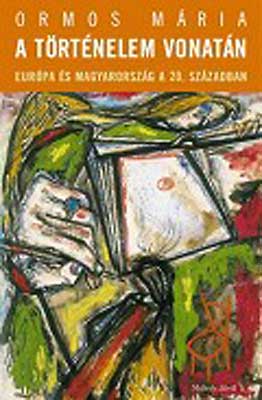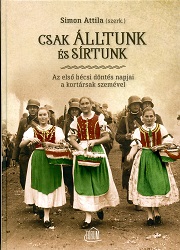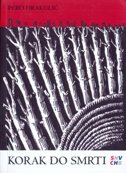
We kindly inform you that, as long as the subject affiliation of our 300.000+ articles is in progress, you might get unsufficient or no results on your third level or second level search. In this case, please broaden your search criteria.



Suočeni smo s time da se hrvatskome antifašističkom otporu poriču demokratske tekovine, uz obrazloženje kako ih nije moglo ni biti jer je komunističko vodstvo ratne tekovine koalicijske antifašističke Narodne fronte iskoristilo kao politički kapital da bi hrvatskoj naciji nametnulo obnovu južnoslavenske državne zajednice, a njoj boljševičku diktaturu. Unatoč činjenici što je ona i uspostavljena, takav pristup odbacuje i zasluge antifašističke borbe za vraćanje matici zemlji teritorija koji su oteti prije i tijekom Drugoga svjetskog rata, oslobođenje hrvatske nacije kolektivne krivnje za holokaust i genocid, sprečavanje obnove južnoslavenske državne zajednice pod vodstvom dinastije Karađorđevića i svrstavanje hrvatske nacije uz bok pobjedničkoj svjetskoj antifašističkoj koaliciji, a to jesu demokratske tekovine hrvatskoga antifašizma.
More...


“The Train of History” by Mária Ormos invites the reader to two different „journeys”. Reception of both, history and historiography. It is a comprehensive study with author’s vision on Europe, focusing on the Hungarian history and Hungarian identity.
More...
The history of uprising in Nazi extermination camp in Sobibór told by the eye-witnesses who survived and escaped death. 27 testimonies of camp’s prisoners (including two of them who died in the gas chamber) represent over 300.000 of those who perished in Sobibor.
More...
The story of seven Jews and a catholic priest who spent almost 5 months hidden in the basement in the ruins of Warsaw – city completely destroyed after Warsaw Uprising in 1944. Those “Robinson Crusoes of Warsaw” survived times of the terrific threat: human voices heard from the sewage system, first snow that shut off the ways to reach the food. They had to fight their own nature in extreme conditions and ceaseless danger. Due to their determination and sensitivity they managed to survive. After the liberation of Warsaw on January 17th 1945 they came out from their hideaway.
More...
A thrilling testimony of a Jewish doctor, direct witness of the Holocaust, who lost almost all his loved ones and spent 9 months hidden in an attic of the house inhabited by a Polish family. His testimony was written while hiding in Tłuste (today’s Ukraine) in 1943–44. Significant part of the memoirs is devoted to his prewar life and the situation of young Polish Jews in the 1930s. The part of the book related to the war time reflects the cruelty of aggressors and complicated relations between Jewish, Polish and Ukrainian people in the small cities of Podole region.
More...
An account made by 18 years old girl. Her Jewish origin was a death sentence but she managed to escape form ghetto in Końskie and survived the Holocaust “on the aryan papers” thanks to help she got from Poles. Her testimony is a vivid image of the everyday life under the Nazis and a frank, truthful study of the Polish-Jewish relations.
More...
Deeply touching and thrilling account of a Czech Jew. Glazar was one of only a few survivors of the Nazi death camp – Treblinka. He was transported to Treblinka in October 1942 and was one of the workers who sorted the belongings of those sent to the gas chambers. He survived several months working in the camp, knowing that he was working for a cause that killed thousands of Jews. On August 2, 1943, the prisoners of Treblinka broke out through a damaged gate during a revolt. While most of the escapees were arrested in proximity to the camp, Glazar escaped the area and made his way across Poland.
More...
Unique collection of accounts, diaries, memoirs, letters, reports, leaflets, press and literary works created in the Warsaw Ghetto. The material comes from an archive that Jews gathered during the war to document the life of Jewish community inside the Ghetto.
More...
This monograph examines how Polish authors writing in the first half of the nineteenth century described these European nations which in their opinion played a significant role in the history of Europe through the past centuries. The nineteenth century authors were convinced that in each of the consecutive historical epochs, typically it was one nation that due to different circumstances acquired special importance and directed a general development. Such prominent communities, via a number of missions entrusted upon them, became the "keepers of the history," playing different functions that often overlapped: they were defenders of freedom, promoters of art and civilization, leaders of economic changes, or initiators of intellectual growth.
More...
This book describes the daily life in southern Slovakia in the period of the decision made on the First Vienna Award and of its enforcement as reflected in contemporary texts (diaries, memoirs) and photographs. The volume contains 19 texts and is illustrated by about 180 photos reporting on the processes taking place in southern Slovakia in the autumn of 1938. These mainly reveal pre-war tention in the first days of the Munich Agreement, the expectations surrounding the Hungarian–Slovak border talks, and the delight of the Hungarian population living here over return to Hungary.
More...
Kordun je područje oko rijeke Korane između Male Kapele na zapadu i Petrove gore na istoku. Ime je dobio prema francuskoj riječi cordon, što znači: vrpca, sistem, niz, red, stražarnica, granica. Cijeli Kordun gravitira prema Karlovcu. Zauzima područja bivših kotareva (srezova): Vojnić, Vrginmost i Slunj. To je veliki kraški ravnjak koji se odlikuje oblicima plitkog kraša s mnogobrojnim vrtačama i uvalama. U njegovom sjevernom dijelu se nalazi Petrova gora (507 n/m). Od Karlovca je udaljena 30 kilometara, okružena cestom Vojnić-Vrginmost-Topusko-Velika Kladuša-Krstinja-Vojnić. To je bjelogoričnom šumom obrasla površina od 10728 hektara. Njenu posebnu prirodnu vrijednost čine bistri žuboreći potoci, mnogobrojne duboko uvučene livade, pašnjaci, izvori dobre pitke vode i obilje šumskog cvijeća. Na svojim brežuljcima i uvalama ona krije 1700 grobova poginulih i umrlih partizanskih boraca NOR-a i 2504 žrtve ustaškog zločina genocida, bezbroj historijskih događaja, mnogo herojskih podviga, ljudskih sudbina, crnih marama i muka čudovišnih.
More...
Zločina i zločinaca uvijek je bilo, njih ima i danas i bit će ih sutra. To su neosporne činjenice s kojima čovjek današnjice računa kad živi i kad se priprema za budući život. U vrijeme kad smo na pragu postindustrijskog društva, kad strojevima dirigiranim sa zemlje čeprkamo po površinama dalekih nebeskih tijela, kad je čovjek uspješno koraknuo mjesečevim stijenama, kad osvajamo ono što je bilo i za maštu predaleko, na našoj planeti, tu gdje žive civilizirani narodi, prepuni su ambari opasnosti i stovarišta smrti. Čovjek očito, živeći u proturječnostima ideja i sistema, u različitim ekonomskim i društvenim uvjetima, nije siguran i mora stalno misliti otkud mu i kakva opasnost prijeti, tko će ga i kada napasti, kakve mu katastrofe sprema po svemu sličan čovjek‑brat, čovjek‑nebrat.
More...
An account of a crime aimed at human lives inevitably suppress¬es a testimony on robbery, even if it was an armed robbery. Prob¬ably, that is the only explanation for an overwhelming absence of serious work on collecting the evidence and critical retrospect of the disappearance of property acquired by Serbs in Croatia, Slavonia, and Dalmatia during the turbulent twentieth century. While there are hundreds of volumes published on genocide, with the tendency of permanent growth, when it comes to prop¬erty, there is – silence. It seems that the understanding of inevitability of this process has been widely accepted. The magnitude of this process is best illustrated by the proportion of ethnic Serbs in the population of Croatia: before the First World War, one in four inhabitants of Croatia was a Serb, while nowadays it is one in twenty-four, roughly estimated.
More...
A third of my adult life I have lived in what used to be known as the capital of Yugoslavia, Belgrade. The second third I have spent in what was known as Czechoslovakia, in the Moravian city of Olomouc. Yet both countries came into existence and ceased to exist within the 20th century. Many would say that similarities were aplenty. Both countries were formed in the immediate aftermath of the Great War (though Yugoslavia was initially called the Kingdom of Serbs, Croats and Slovenes), both suffered immensely during World War II, both endured almost half a century of Communist rule, both expired by the end of the century. However, the differences were far greater than the similarities, especially when it comes to the breakup of the two states, as ‘the process of that breakup was vastly different in the two states: it was virtually painless in Czechoslovakia, while it is excruciatingly painful in Yugoslavia’ (Bookman 1994, 175). Much has been written on the two topics, with the death of Yugoslavia probably receiving the most attention, due to the sheer brutality of the bloody breakup during the 1990s, yet a comparative research – to my knowledge – has seen scant attention, with a few notable exceptions (Bookman 1994, Bunce 1999). [...]
More...
Internationally admired for her fearless reporting, award-winning journalist Anna Politkovskaya turns her steely gaze on President Putin and his early regime in this book.From Putin’s tyrannical grip on ordinary citizens to rampant corruption in highest ranks of the government, as well as Mafia dealings, scandals in the provinces and the decline of the intelligentsia, Politkovskaya offers a scathing condemnation of the President and his rule, revealing a shocking state of affairs: soldiers dying from malnutrition, parents requiring to bribes to recover their dead sons' bodies and conscripts are being hired out as slaves.More relevant and important than ever in today’s political landscape, Putin's Russia is both a gripping portrayal of a country in crisis and the testament of an extraordinary reporter.
More...
Nakon što sam pročitao zapise admirala Branka Mamule, nametnula su mi se dva ključna dojma. Prvi se dojam ticao činjenice da je u jednoj ratnoj partizanskoj biografiji bilo moguće učešće u epopeji Petrove gore u proljeće 1942. i, ne mnogo vremena zatim, učešće u pomorskoj partiji šaha u zadarskom arhipelagu i na Kvarneru, posljednjih godinu dana Drugog svjetskog rata. Kordunaški momak, koji nikad nije vidio more i koji nije znao plivati, dvadeset ratnih mjeseci bio je učesnik danas prilično zaboravljene savezničke borbe na sjevernom Jadranu, koja se pretvorila u pobjedničku stratešku igru. Drugi dojam ticao se činjenice da je taj kordunaški momak, svjedok dvaju stoljeća – naš suvremenik. [...]
More...